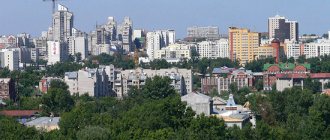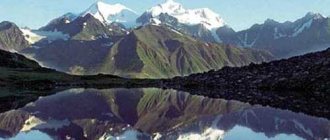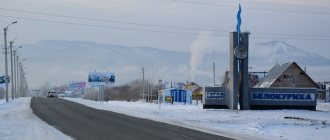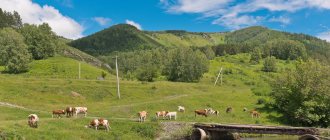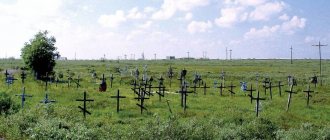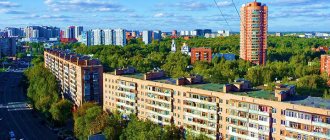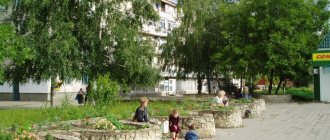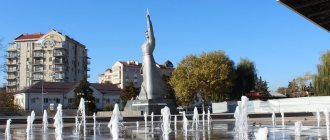The implementation of state policy at the level of subjects, the solution of regional social and economic problems in the Russian Federation is entrusted to the State Administration and other local government bodies in Rubtsovsk. The entrusted responsibility is implemented through the approval of laws and other regulatory documents on behalf of the subject of the Russian Federation. In accordance with federal legislation, state administrations are vested with authority within the limits of their jurisdiction, as well as in matters of general work with federal and regional authorities.
The state administration in Rubtsovsk, as a regional structure of executive power, is responsible for management of production and economic activities, financial, social spheres in the territory of the entrusted region. Their activities and the implementation of assigned tasks are based on decisions, laws, and regulations adopted by regional authorities, as well as at the federal level.
Military Commissariat - Rubtsovsk
Within the limits of its competence, each administration issues regulatory documents that are subject to implementation by all subjects of the region.
General information and history of Rubtsovsk
This wonderful city is located among the steppes in the Altai region.
Despite its relative proximity to Kazakhstan, Rubtsovsk, located on the banks of the Alei River, is not considered a border town. Initially, in 1886, this city was founded as a village and only in 1892 residents were allowed to use the land, so the history of the city dates back to this year. It was founded by Mikhail Rubtsov, in whose honor the city was subsequently named.
Monument to fallen soldiers on the station square. Photo by you-rev (https://fotki.yandex.ru/users/you-rev/)
The formation of the city and its development occurred during the Second World War, when evacuated enterprises were located on its territory. The development of the city did not stop even after its completion. Its economy grew until the collapse of the Soviet Union, after which its performance fell and has not increased to this day.
Travel to Rubtsovsk - the third largest city in the Altai Territory
Rubtsovsk is the third largest city in the Altai Territory, after Barnaul and Biysk. But at the same time, it is not like any of these cities. You will not find in Rubtsovsk particularly striking tourist attractions or amazing beauties that other cities may be famous for. There is no chic and splendor of the capitals here. But this does not mean that the city is not interesting. It is interesting, but rather in terms of local history tourism - as a bright representative of the era of socialist towns and post-war architecture, as well as as a bearer of the discreet but diverse culture and life of the settlers, which gradually permeates these streets, reminiscent of the now distant past. Rubtsovsk is located in the southwest of the Altai Territory, 40 km from the border with Kazakhstan. The city is located in the Aleyskaya steppe, which is part of the vast Pre-Altai plain, beautiful and fertile. As we remember from the history of our country, these territories, starting around the 18th century, were inhabited by residents of the European part of the Russian Empire. Once upon a time, my ancestors came here in search of a better life. Almost all current residents of Rubtsovka are descendants of immigrants of one wave or another.
The city was founded in 1892 by a resident of the Samara province, a retired soldier of the Russian-Turkish War, Mikhail Rubtsov. Once upon a time he came with his fellow villagers to the banks of the Aley and built a dugout here. From this dugout came the city, whose population now is more than 145 thousand people.
Of course, Rubtsovsk did not immediately become a city. At first it was a completely patriarchal village with a church, adobe houses and wooden fences. It had a couple of cobblestone streets, but the rest were country roads where goose grass grew along the sides and chickens bathed in the dust. What changed the fate of this village so dramatically?
The fate of Rubtsovsky settlement was changed by the railway. At the beginning of the twentieth century, unprecedented progress came close to the village - steel rails were laid in the steppe and the first steam locomotive began to hum. A locomotive depot was built at the station, which soon made Rubtsovsk a city.
The West Siberian Railway passes through Rubtsovsk, dividing the city into two parts.
An architectural monument of the last century - a water tower (1914) in front of the locomotive depot
This was the first story, and it was not yet the city we know now. However, a reminder of the city’s “childhood” was the preserved old center, built up with pre-war and even pre-revolutionary houses. One of the most interesting examples and monument of civil architecture of Rubtsovsk is the Rubtsovsky Drama Theater (built as the “12 Years of October” club in the late 20s of the last century). The building is currently closed for major renovations.
Rubtsovsky Drama Theater
A little architecture of the old center.
Wooden houses near the station
Two-story pre-war house on Komsomolskaya street
A wooden house built in the 20s - 30s on K. Marx Street, the former main street of the city
Despite the importance of the railway, Rubtsovsk remained a small county town before the war. The war changed everything - two large factories of Union significance were evacuated here from Odessa and Kharkov. In the new location they became the Altai Tractor Plant, turning the city into one of the largest industrial centers beyond the Urals. Tens of thousands of people were employed in the city's factories. The production of tractors and agricultural machinery made Rubtsovsk a kind of center for virgin soil development in the sixties. The social cities of ATZ and Altaiselmash were built, giving the city its modern appearance. The architectural ensemble of those years has been preserved almost in its original form - this is a real preserve of the “Stalians”. The only thing is that these buildings have not seen renovation for a long time...
Well, one cannot help but say that with the collapse of the Soviet Union, these two large factories practically ceased to exist, which had a very negative impact on the life of the city...
Rubtsovsky Puppet Theater named after. Brahmana (former ATZ cinema hall)
Architectural ensemble of Lenin Square
Architectural ensemble of Lenin Square
ATZ clinic resembling an ancient Greek temple
Monuments and other attractions
Wooden Church of Michael the Archangel. A preserved pre-revolutionary monument of wooden architecture (1906). The church successfully survived Soviet times and was not destroyed. Now this is not the only Orthodox church in the city.
Church of St. Michael the Archangel
Church of the Nativity of the Blessed Virgin Mary
Monument to the fighters for the establishment of Soviet power in Altai. A sacred place in the city center. Behind the central stele is the actual burial place of those killed during the Civil War.
On Rubtsovsky Avenue
Monuments to leaders. The city has perfectly preserved monuments to Lenin, Marx and Engels, and Kirov.
Monument to Lenin on Lenin Square
Sculpture in the recently created “Unconquered” square, dedicated to the memory of prisoners of fascist camps.
Monument to the tractor - “Tselinnik No. 1”
Near the elevator of JSC "Melnik"
The city has several themed sculptures from the Soviet period. I like this recently restored sculpture “Cosmos” for its subtlety and grace; as you might guess, it is dedicated to the first manned flight into outer space.
On Lenin Avenue
One of the modern city sculptures is “Horse in a Coat,” etc.
On Dzerzhinsky Street
City on the river
Rubtsovsk stands on the banks of the greenish, winding Alei River, the longest river in the Altai Territory (858 km), which flows into the Ob. From the bridge in the embankment area there is a beautiful view of the park forest of the floodplain, a place for walks for citizens. Here, behind the bridge, the first kilometer of the 12-kilometer ski trail begins, running along the right bank along the bends of Alei.
Alley in the embankment area. N. Petrova
High water on Alya
12 interesting facts about Rubtsovsk
- Rubtsovsk became a city twice. Moreover, for the first time it was called “Rubtsov”, after which it was demoted back to the village, and later became Rubtsovsk.
- Rubtsovsk was built in the windswept steppe. Therefore, large-scale landscaping was carried out - for example, only in the sixties, several tens of thousands of trees were planted almost every year (mostly poplars). Now Rubtsovsk is one of the greenest settlements in the region.
- The first Rubtsovsky elevator was designed and built by Yuri Kondratyuk, a scientist, one of the founders of astronautics, who at the beginning of the 20th century calculated the optimal flight trajectory to the Moon, later called the “Kondratyuk route.” A street in the city is named after him.
- On the central street of the city - Lenin Avenue - apple tree alleys are planted. Therefore, it is better to come to Rubtsovsk in the spring, when the apple trees bloom).
- There is a trolleybus in Rubtsovsk. Apart from this, in the Altai Territory there is a trolleybus only in Barnaul.
- Rubtsovsk is a sunny city. Despite the Siberian continental climate, in terms of annual sunshine it is not inferior to the southern coast of Crimea.
- Although the city is located in the steppe, less than an hour's drive away are the foothills and mountains of Rudny Altai, including such historical and natural attractions as the ancient city of Zmeinogorsk - the center of Altai mining production, Kolyvan Lake with its alien landscape of stone outcrops and the beautiful calm White Lake, in the clean and transparent waters of which the sacred Mount Sinyukha is reflected. According to existing legend, the tradition of climbing Sinyukha for prayer is more than 250 years old...
- Thirty kilometers from Rubtsovsk there is a unique natural monument - a picturesque rock canyon on the Kizikha River, which is a rock fault forty meters deep in the middle of an absolutely flat steppe.
- In the vicinity of Rubtsovsk there is a burial mound complex “Bugry” of the Scythian-Sarmatian period, where excavations were carried out for several years (including by scientists from the Hermitage) and where a fragment of the body of a woman was found, nicknamed by local residents “the princess with painted nails.”
- This fall, as part of the “Formation of a Comfortable Urban Environment” program, a light and music fountain “Tornado-S” was installed in the central square of the city. As stated, until recently there were only three such fountains in Russia, and last year about ten more appeared in our country and the CIS countries.
- Famous natives of Rubtsovsk are Raisa Maksimovna Gorbacheva and politician Vladimir Ryzhkov.
- The new station in Rubtsovsk was subsequently opened by the deceased governor of the Altai Territory and the famous satirist Mikhail Evdokimov.
Climate and ecology
Rubtsovsk is characterized by a continental climate, just like most cities located on continents. In January, the thermometer rarely shows temperatures below 16.3 degrees, and in July it almost never rises above 21 degrees, but most days of the year are sunny. There is not much precipitation, on average about 335 mm.
The air in Rubtsovsk is very polluted. This is due to the large amount of dust and harmful substances that are emitted into the air every day by heating stations, various enterprises and vehicles. A large number of suspended particles were released into the air by Alttrak OJSC, a machine-building company. It should also be noted that in various parts of the city there is an excess of sulfur dioxide, the main source of which is the locomotive depot.
Bridge over the Alei River. Photo by you-rev (https://fotki.yandex.ru/users/you-rev/)
Water also suffers. Wastewater from MP Vodokanal, OJSC Alttracom, and wastewater treatment plants is discharged into the Alei River; the WWTP MP Vodokanal also pollutes the river below the city limits. Another factor that negatively affects the environment is the tests carried out at the Semipalatinsk test site, which caused radioactive contamination.
Coat of arms
The coat of arms of Rubtsovsk is presented in the form of a French shield. In the middle, against the background of a sun circle, is a part of a gear, symbolizing mechanical engineering. Inside the circle is a scroll with the number “1892” (the year the city was founded). There is a blue ribbon running diagonally to the lower left corner, representing the Alei River. In the upper part, against the background of the blue sky, is a falcon, common in these parts. A bird spreading its wings soars over a field of ripe wheat. There is a row-crop tractor on it. Wheeled vehicles characterize the products of the urban planning enterprise. The green stripe along the symbolic river signifies fertility, life, nature. At the bottom, near three ripe ears of wheat, “Rubtsovsk” is written in red letters.
The artistic composition was approved by Resolution of the Rubtsovsk City Council of Deputies dated July 20, 2002 No. 363.
Population of Rubtsovsk
According to statistics at the beginning of 2014, 147,495 people lived in Rubtsovsk. In 2009, the number of births increased by 8.5%, amounting to 1,655 people, and the number of deaths was 4% less than in 2008, amounting to 2,355 people. Infant mortality also decreased by as much as 14.3%, which was 14.5 per 1000 people, while in 2008 this figure was 17.9 people. The population in Rubtsovsk is declining, but not at the same rate as previously noted.
Also in 2009, 687 people left Rubtsovsk, which is 229 people less than in 2008. Before 2008, there was an outflow of population from the city, and since 2009 there has been an increase in migration. Since 2009, 2,585 people have arrived in the city, and 1,899 have left. In recent years, the number of marriages has increased and the number of divorces has decreased, now there are 762 divorces for every 1,342.
Rubtsovsk. Palace of Culture for Tractor Builders. Photo by you-rev (https://fotki.yandex.ru/users/you-rev/)
Rubtsovsk, like many small provincial towns in Russia and neighboring countries, is currently experiencing difficult times. This test has been going on for about 20 years, since the Union collapsed. The fact is that the main infrastructure of the city and revenues to the local budget were generated by agricultural engineering factories, which were also the main source of employment for the city’s population.
With the collapse of the USSR, all production threads and connections with suppliers and consumers were gradually destroyed. The decline in agriculture also played a significant role. Now out of five factories, only one is operating at a quarter of its capacity. What saved him was that he specialized in producing products for the military industry.
All these factors naturally affect the moral and psychological climate in the city; it is difficult to imagine that many thousands of people suddenly found themselves without work, and as a consequence - a crime situation and nervousness in the city. But this is a separate topic.
Story
The history of Rubtsovsk dates back to 1886 (the founding date is considered to be 1892). The name comes from the name of the founder, a retired soldier. In 1901, Rubtsovsk was given the status of a settlement, and 5 years later - a village. Before the First World War, there was a candle factory, a mill and a railway line here. During the formation of Soviet power, the settlement repeatedly came under the control of the Bolshevik forces and the Siberian Army.
The year 1923 was marked by receiving the status of a county center, and 1927 - a city. Soon an agricultural enterprise was erected and launched there. During World War II, it turned out to be a site for the evacuation of factories. After its completion, production potential increased. Heavy industry was modernized, and wide-profile products began to be produced. The population grew at a rapid pace.
As part of the Russian Federation, it turned out to be dependent on the welfare of the city-forming companies.
Districts and real estate of Rubtsovsk
The city is relatively small, with a total area of 8,325 hectares and consists of a central part where administrative and cultural and entertainment centers are located, as well as numerous retail outlets and a central market.
Previously, when all the city's enterprises were operating, the districts were divided according to factory territories:
- ATZ region (Altai Tractor Plant) - the largest plant in its time not only in Siberia, but also in the country;
- AZTE district (Altai Tractor Electrical Equipment Plant) is an equally well-known enterprise, also an award-bearing and right-flank plant in its industry;
- ASM (Altai Agricultural Machinery Plant)
As in any city, in Rubtsovsk there are districts under unofficial names that have been around for decades and it seems that other names will no longer be suitable and will not reflect the essence and originality of the district.
Below the Kulatsky village, where wealthy people settled at the founding of the city, private buildings are concentrated in this area. Otorvanovka, Kopay - a city, Bermuda - these are the so-called slums, where at all times these areas were distinguished by a special crime situation.
There is a large concentration of the private sector in the western and southwestern (Garden - City) parts of the city. Previously, it was very difficult to get to the city center, transport was irregular and during rush hours people traveled to work on overcrowded buses. Now the situation has changed, minibuses have appeared, getting to the center has become much easier, and passenger traffic has decreased due to the closure of factories.
There is an area in the city called “houses”. His story is interesting. In the area of the RMZ plant (Rubtsovsky Machine-Building Plant), which specialized in the defense industry, they used to build prefabricated panel houses, as there was an acute shortage of housing for factory workers. In this way, the problem was partially solved, but the quality of housing left much to be desired. The housing did not in any way correspond to the climatic conditions of Siberia, so all the buildings were eventually demolished and built up with new modern houses. And the name of the area remained in the history of the city.
Housing prices in the city differ slightly compared to large cities, where the difference in prices across regions is noticeable. But in the level of our city this difference is also significant. In the city center, the price for a two-room apartment ranges from 700,000 rubles. up to 1.5 million depending on the layout, number of floors of the apartment, and the condition of the housing. On the outskirts of the city, the cost of real estate decreases by about 150 - 200 thousand. In the private sector, house prices also range from 700,000 to 3 million rubles. With such a gap in value, the area and condition, amenities and living space of the house are taken into account.
The outskirts of the city are being intensively built with cottages. The wealthiest citizens build housing that is comparable to a real work of art, while the middle class builds more modestly, but tastefully. Prices for such buildings are an order of magnitude higher than city apartments and are already calculated at about 2 - 5 million rubles and more.
Despite the difficulties, the city lives, raises talented people, develops and transforms into a modern cultural metropolis. Residents of Rubtsovsk believe in its future and selflessly love their city.
City infrastructure
In Rubtsovsk, there is the following system for the provision of public services, according to which the organization supplying resources concludes contracts with those who perform the services. However, when the calculation occurs, a lot of problems arise for the consumed thermal resources. Heating networks make calculations taking into account the volume of services, based on the performance of a common house appliance, and if there is none, then based on the consumption standard established by the local government.
While management companies determine the amount of energy supplied using individual meters or according to the standard and do not take into account the general building meter. As a result, in those houses in which the meter is not installed, a significant difference appears, and, consequently, a debt to the one who supplies the resource. That is why all residents of apartment buildings that have meters, and do not have a common building meter, will have to pay the debt issued by service providers. In this case, it is useless to go to court, because as practice has shown, all such processes are resolved in favor of service providers.
There are trolleybuses, buses and minibuses in Rubtsovsk; in addition to public transport, there are taxis in Rubtsovsk. The Barnaul-Semipalatinsk railway line and the A 349 highway also pass through the city.
Rubtsovsky railway station. Photo by you-rev (https://fotki.yandex.ru/users/you-rev/)
There are 58 municipal educational institutions and 8 institutions of regional significance in Rubtsovsk. Every year, all institutions are inspected by a commission that checks the readiness of municipal institutions for the academic year. Members of the commission carefully inspect all premises to determine their suitability for receiving children. Every year the budget allocates funds for cosmetic repairs and the purchase of new equipment for educational institutions. Parents are also involved in the improvement of schools and kindergartens: they not only help make repairs, but also improve the territory.
Administration
Establishment
| Name of the organization | Administration |
| Area | |
| Telephone | +7 (38557) 9-64-00 +7 (38557) 9-64-01 |
| Working hours | no information |
| [email protected] | |
| Region | Altai region |
| Website | https://rubtsovsk.org |
| Organization address | Altai Territory, Rubtsovsk, Lenin Avenue, 130 |
Enterprises and work in Rubtsovsk
In Soviet times, enterprises in Rubtsovsk flourished, but now many of them have either closed, are idle, or are only partially operational. However, the city has preserved an engineering plant that offers many services: from development to manufacturing and repair. The plant is one of the leading factories in the Altai Territory and provides many jobs to the urban population.
Also in the city there is OJSC "Melnik", which produces flour products, which allows the Rubtsovsky bakery to work properly, because bread is always bought, which means there are always jobs there.
Shopping center Maria-RA. Photo by you-rev (https://fotki.yandex.ru/users/you-rev/)
As in any city, there is a meat processing plant in Rubtsovsk, which provides the urban population not only with dry-cured meat, but also with other types of products. In Rubtsovsk there are plenty of jobs not only at state-owned enterprises, but also at private ones. Most residents work hard at state-owned enterprises, where, in addition to a stable salary, there is a social package that, as a rule, is not provided by private organizations.
Industry on the map of Rubtsovsk
Today Rubtsovsk is rightfully considered the center of industry in the southwestern territory of the Altai Territory. Several largest industrial plants and factories operate here, producing equipment for soil cultivation, spare parts for trains, special purpose mechanical engineering, agricultural engineering and various metal products, etc. To find a suitable address, you need to use a map with house numbers, or use online search.
To get the address, you need to type the following data in the search window - prospectus (highway, highway, etc.), as well as the house number and click “Find”. In addition, in the territorial area of Rubtsovsk there are factories producing food and light products. Also, passenger and freight transportation, as well as food services for residents and the service sector are well developed here.
Crime
Rubtsovsk is not a crime-ridden city. Of course, like in any other city, there are thefts, robberies, and even murders. The only truly terrible case was the murder in the Omut cafe-bar, when two friends were beaten. One friend was beaten on the head by five people, and the other was held. Nobody tried to help the guys: neither the bar staff nor the visitors. They released the second only after the first stopped breathing and ran away. The ambulance refused to respond to this call. A friend tried to take the beaten man to the hospital himself in a taxi, but the taxi drivers, seeing his bloody clothes, refused him. The guy had to run to the police station and only after that the ambulance arrived. The beaten guy underwent surgery on his skull and fell into a coma. On the third day he was gone, and those who beat him were released on their own recognizance.
This murder still worries local residents, especially since a year before, a similar murder was committed, but not with such cruelty. The only thing that scares the city authorities is the growing juvenile crime. Every year, criminals become younger and crimes become more significant.

